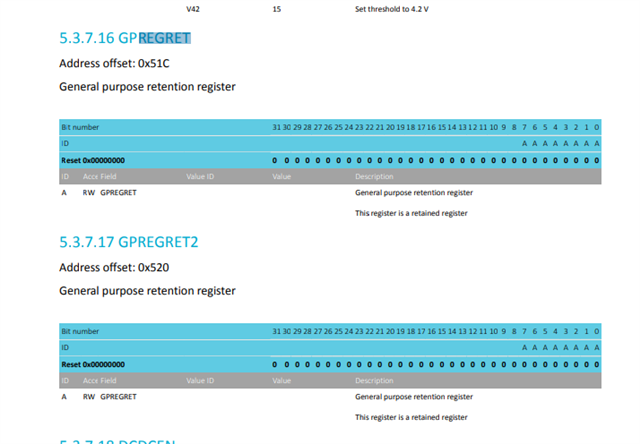Hi Devzone:
Where can I find full document on how to use nrf_power_gpregret_set?
Background: I am planing to do buttonless DFU without BLE but through usb cdc acm.
After digging around devzone I found a post suggesting putting this 2 lines of code into my application in order to enter DFU mode:
nrf_power_gpregret_set(0xB1);
NVIC_SystemReset();
The problem is there's not much info about what that value 0xB1 means.
Here is a screen shot of a document mentioning gpregre_set function:

No explanation on what value to set can be found on this page. Where can I get more info on this?
Thanks!


